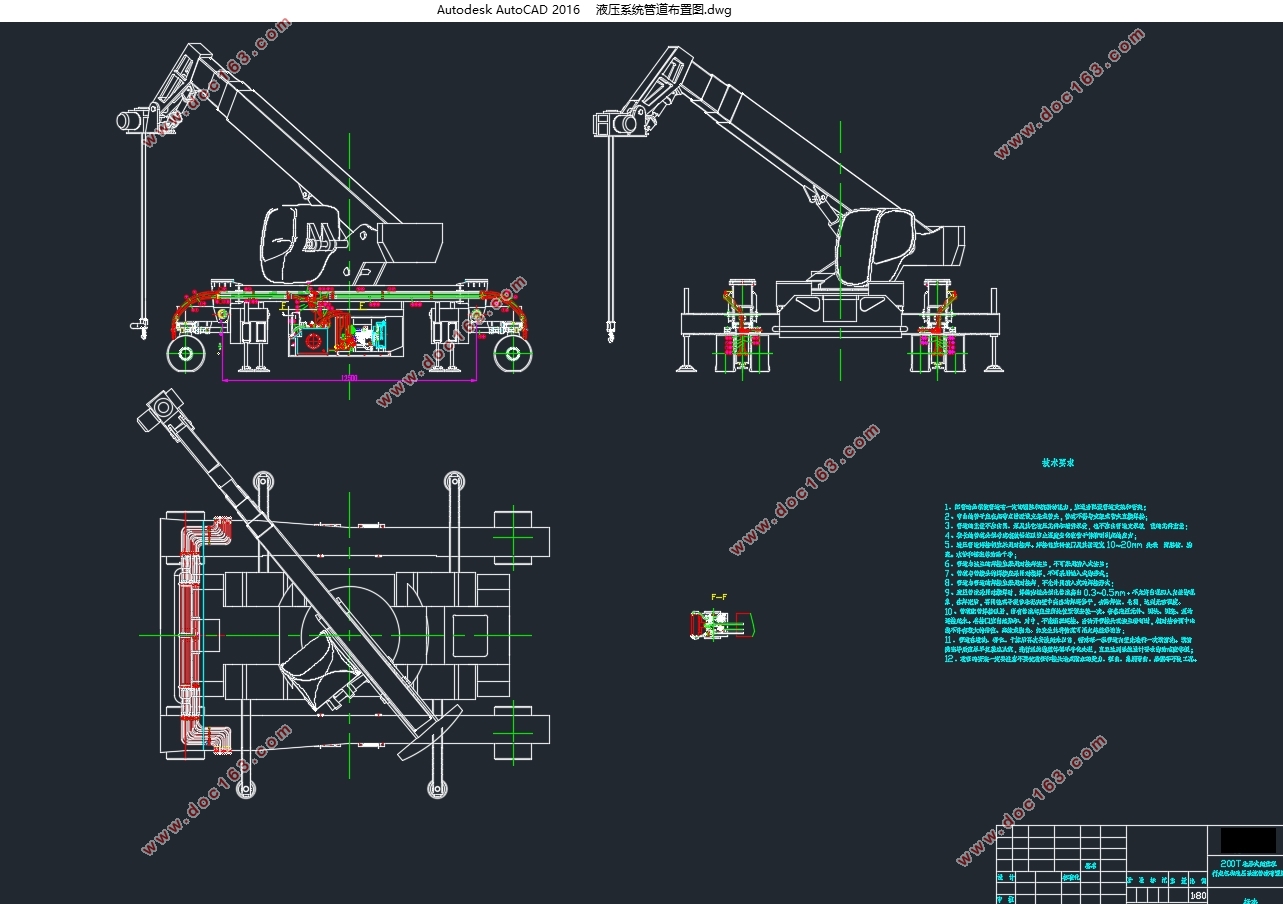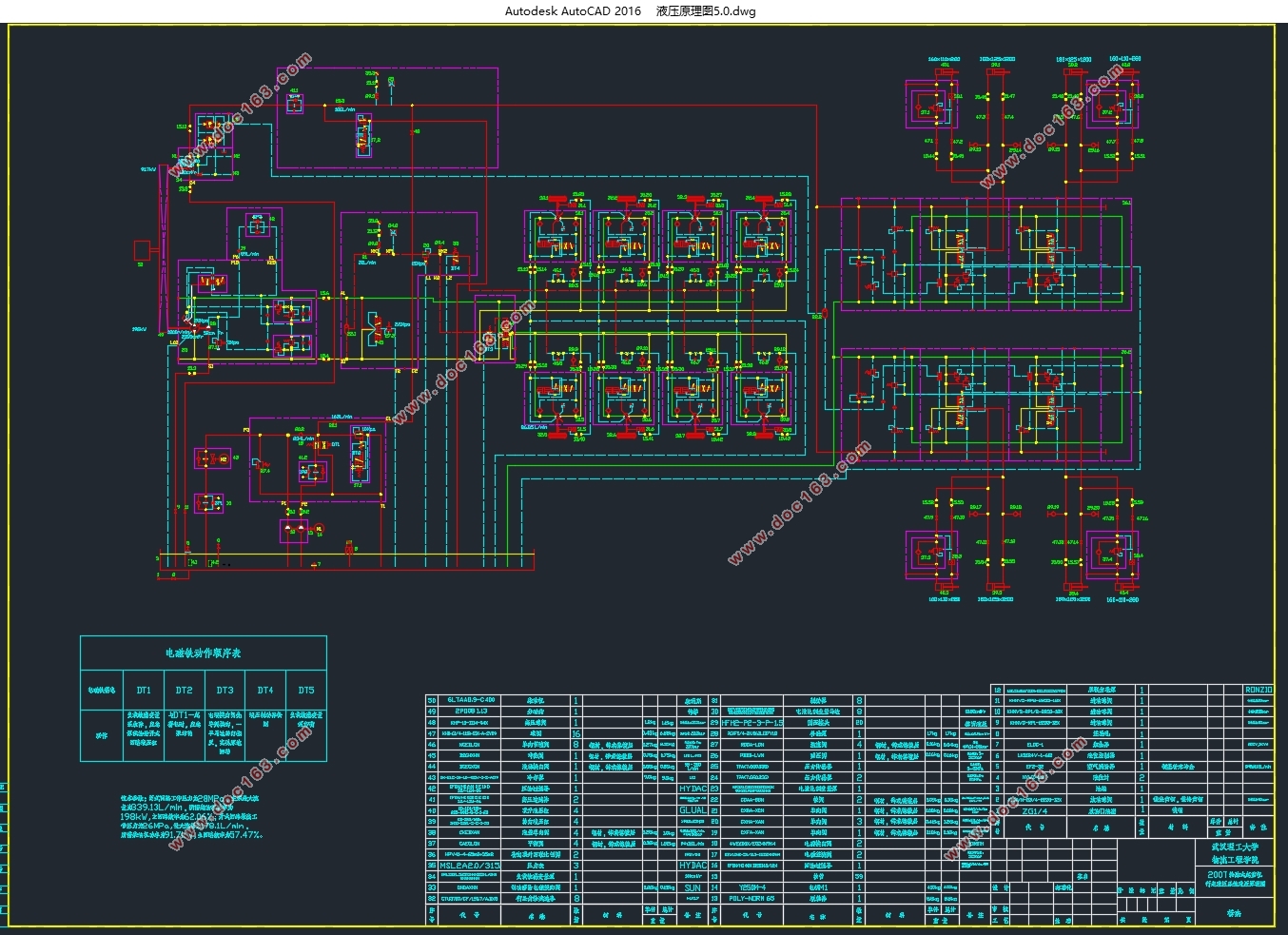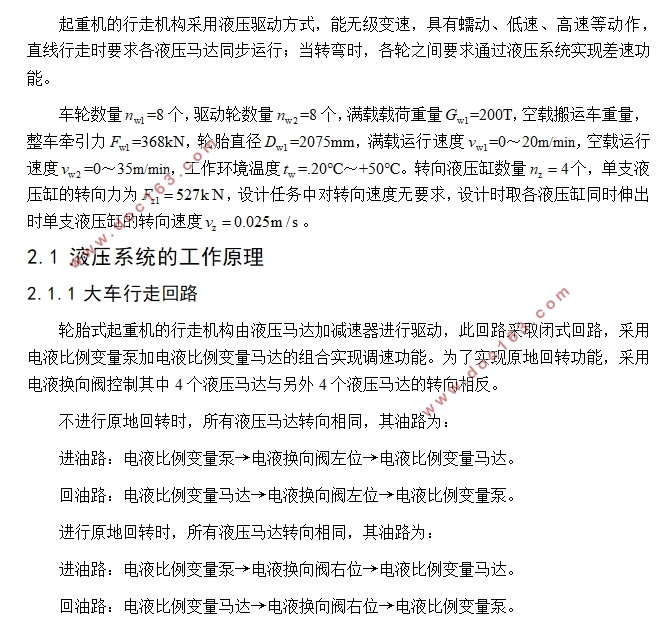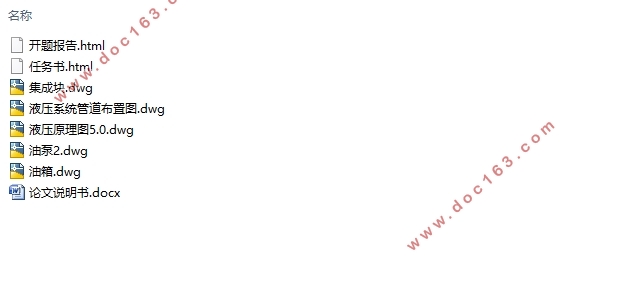200T轮胎式起重机行走液压系统的设计与分析(含CAD图)

200T轮胎式起重机行走液压系统的设计与分析(含CAD图)(任务书,开题报告,论文说明书15000字,CAD图5张)
摘 要
近年来国内起重机行业发展迅速,但仍以小吨位为主,受限于设计制造水平,大吨位起重机还是以进口为主。国外游艇搬运车技术发展成熟,其液压系统设计的很多地方值得借鉴。于是在此基础上,本文加以创新得到一套液压系统用于轮胎式起重机。
本文主要是设计起重机行走机构液压系统,包括大车行走机构、大车转向机构和支腿收放机构这三个部分。其中大车行走采用闭式回路,调速方式为容积调速。大车转向和支腿收放采用开式回路,共用同一动力源,共用同一比例阀组进行调速,但不同时工作。
通过本次研究可知,液压系统设计离不开各种基本回路,都是那些回路的有机组合。回路的作用是不变的,变的只是对产品的要求。从游艇搬运车到轮胎式起重机,可以知道功能相近的产品,其液压系统类似,这对液压系统设计具有启发的意义。
关键词:轮胎式起重机;游艇搬运车;行走机构;液压系统
Abstract
In recent years, the domestic crane industry has developed rapidly, but still dominated by small tonnage.Limited to the level of design and manufacture, large tonnage cranes are mainly imported. The development of yacht truck technology abroad is mature,and many aspects of its hydraulic system design are worth learning. So on this basis, we can get innovated hydraulic system for mobile cranes. [资料来源:http://Doc163.com]
This thesis is to design the hydraulic system of walking mechanism of crane, including walking mechanism,steering mechanism and leg retracting mechanism. Which walking mechanism adopts the closed circuit, and the speed adjustment method is volume control. The steering and retracting mechanism adopts the open loop, sharing the same power source, sharing the same proportional valve group speed. But not at the same time.
The study shows that the design of the hydraulic system cannot do without the basic loop.It’s all the organic combination of those circuits. The role of the circuit is unchanged, what changes is the demand for the product. From the yacht truck to mobile crane, we can know that the hydraulic system could be similar if products have similar functions, which has enlightening significance for hydraulic system design.
Key Words:mobile crane;yacht truck;walking mechanism;hydraulic system
[来源:http://www.doc163.com]




目 录
第1章 绪论...................................................................................................................................1 [资料来源:www.doc163.com]
1.1 轮胎式起重机......................................................................................................................1
1.2 国内外起重机的发展概况..................................................................................................1
1.3 主要研究内容......................................................................................................................1
1.4 设计目的和意义..................................................................................................................2
第2章 起重机液压系统设计.......................................................................................................3
2.1 液压系统的工作原理..........................................................................................................3
2.1.1 大车行走回路...............................................................................................................3
2.1.2 大车转向回路...............................................................................................................3 [资料来源:http://doc163.com]
2.1.3 支腿收放回路...............................................................................................................4
2.2 液压系统原理图的拟定......................................................................................................4
2.3 本章小结..............................................................................................................................6
第3章 系统计算与元件选型.......................................................................................................9
3.1 行走回路..............................................................................................................................9
3.1.1 液压马达.......................................................................................................................9
3.1.2 液压泵...........................................................................................................................9
3.1.3 工作压力......................................................................................................................11
[资料来源:http://www.doc163.com]
3.1.4 其他元件的选择.........................................................................................................18
3.2 支腿与转向回路................................................................................................................20
3.2.1 支腿液压缸.................................................................................................................20
3.2.2 转向液压缸.................................................................................................................21
3.2.3 支腿与转向液压泵.....................................................................................................22
3.2.4 工作压力.....................................................................................................................22
3.3 油泵循环回路....................................................................................................................27
3.4 环保与经济分析................................................................................................................31 [资料来源:http://doc163.com]
3.5 本章小结............................................................................................................................31
第4章 液压系统结构设计.........................................................................................................33
4.1 油箱....................................................................................................................................33
4.2 液压泵组............................................................................................................................35
4.3 集成块................................................................................................................................36
4.4 本章小结............................................................................................................................36
结论...............................................................................................................................................37 [来源:http://www.doc163.com]
参考文献.......................................................................................................................................38
致谢...............................................................................................................................................40 [资料来源:https://www.doc163.com]
